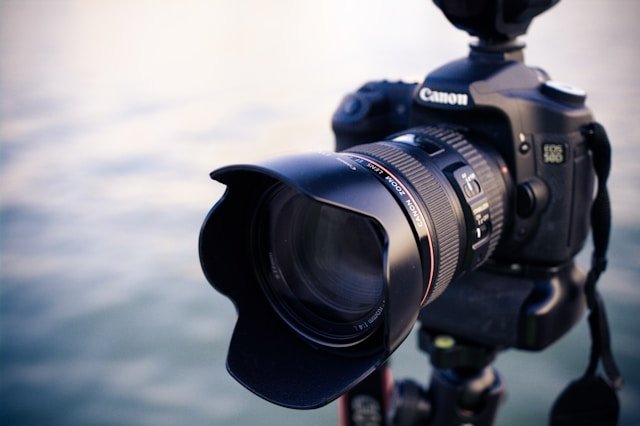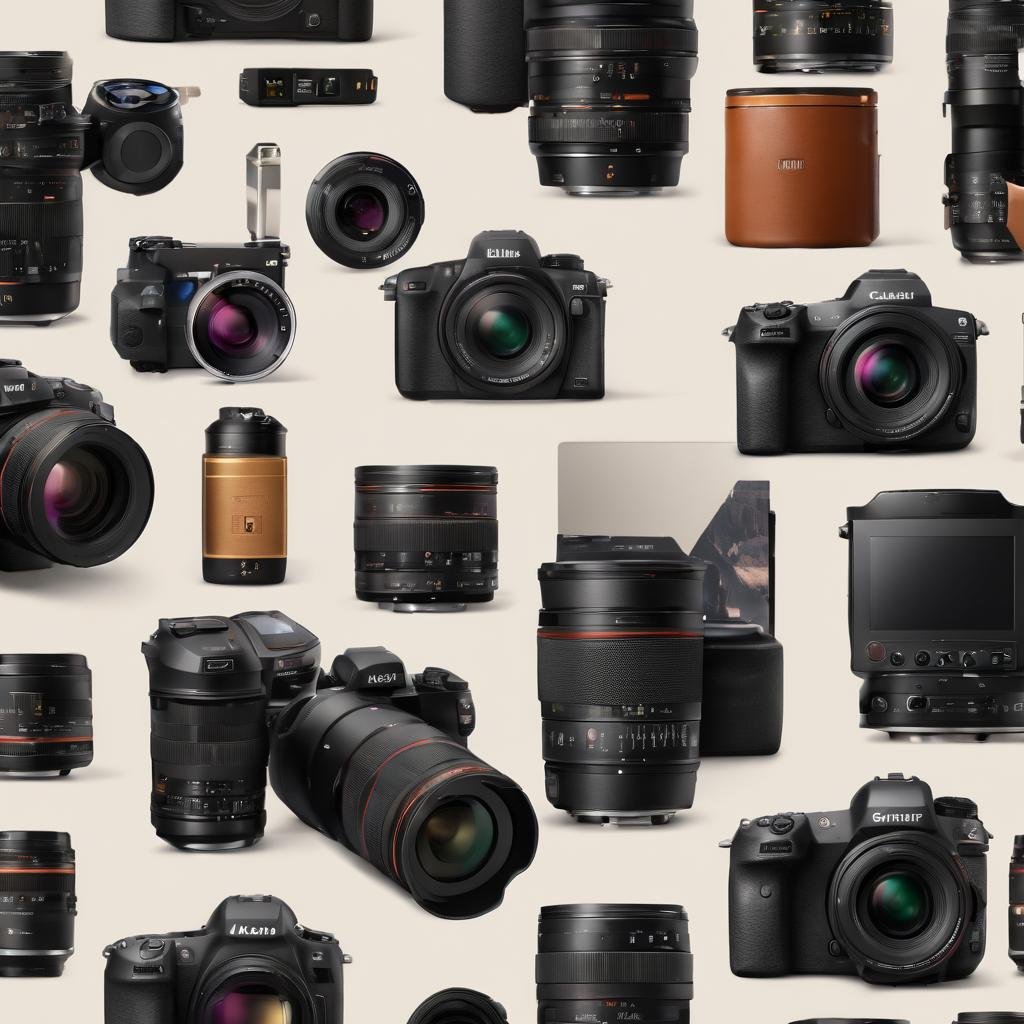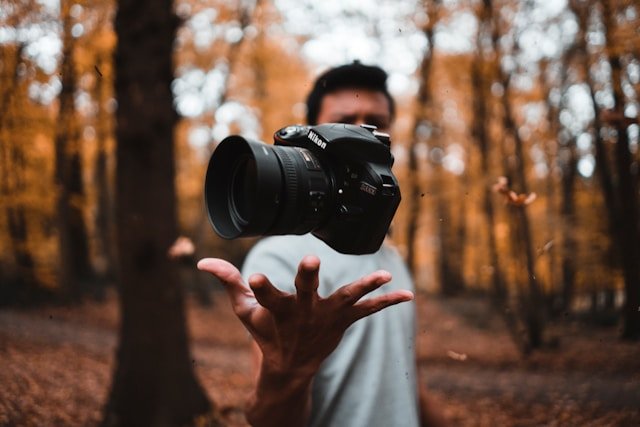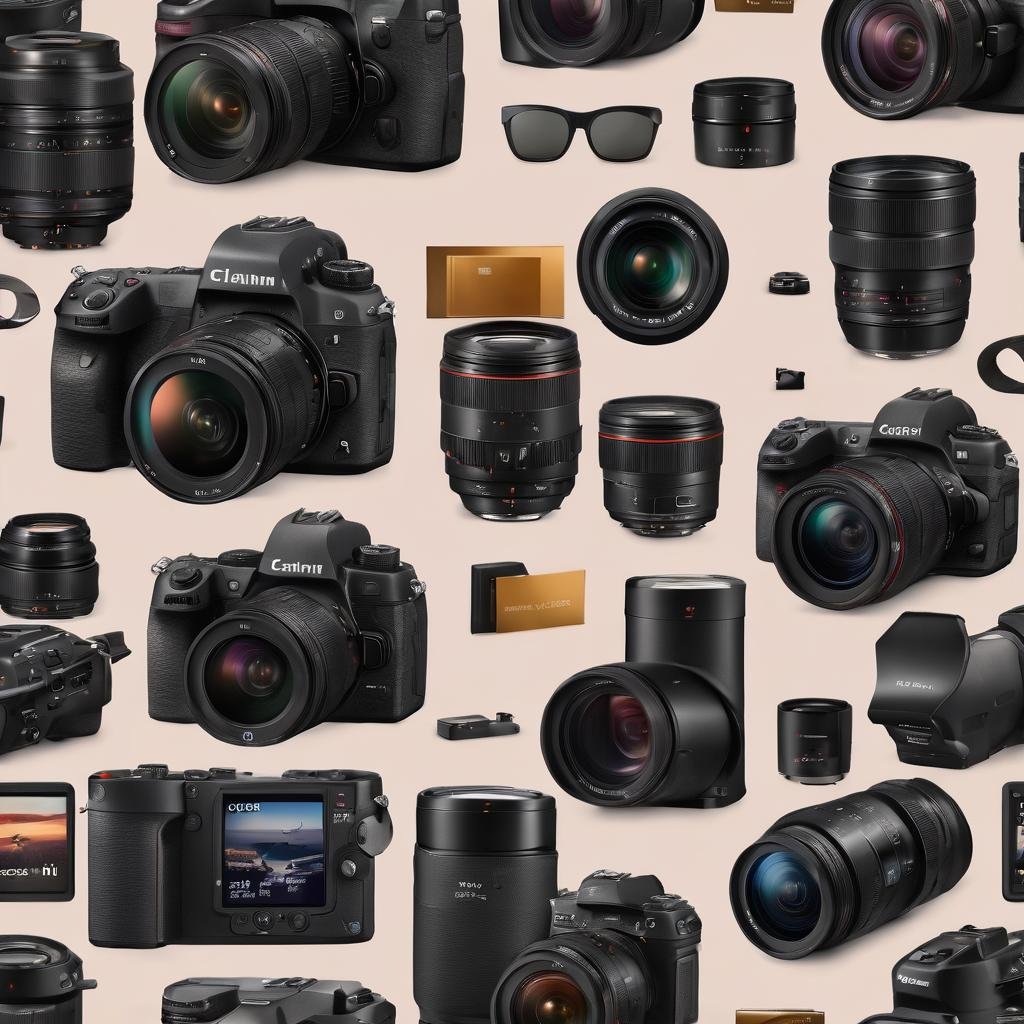Contents
- 1 Overview of Camera Gear
- 2 Types of Cameras
- 3 Camera Lenses Explained
- 4 Tripods and Mounts
- 5 Camera Bags and Cases
- 6 Camera Straps
- 7 Memory Cards and Storage
- 8 Camera Cleaning Kits
- 9 Remote Shutter Releases
- 10 Camera Filters
- 11 External Flashes
- 12 Lighting Equipment
- 13 Studio Backdrops
- 14 Camera Stabilizers
- 15 Camera Accessories for Mobile Devices
- 16 Photo Editing Software
- 17 Printing Equipment
- 18 Photography Books and Guides
- 19 Online Photography Courses
- 20 Camera Gear Maintenance Tips
Overview of Camera Gear
Camera gear is like a labyrinth of tools and gadgets that photographers wield to capture breathtaking images. Cameras, lenses, tripods, and bags all come together in a chaotic dance to create masterpieces. Deciphering the vast array of camera gear available can leave even seasoned photographers scratching their heads in bewilderment.
Knowing the ins and outs of camera gear gives photographers the upper hand when it comes to upgrading their arsenal. Whether they’re shooting sweeping landscapes or intimate portraits, having the right gear can make or break their artistic vision. With technology evolving at lightning speed and new gear hitting the market every day, keeping up with the latest trends is crucial for photographers looking to elevate their artistry and push boundaries in visual storytelling.
• Camera gear consists of various tools and gadgets used by photographers
• Cameras, lenses, tripods, and bags are essential components of camera gear
• Understanding the different types of camera gear can be overwhelming for photographers
• Upgrading camera gear can enhance a photographer’s artistic vision
• Keeping up with the latest trends in camera gear is important for pushing boundaries in visual storytelling.
Types of Cameras
In a world where images hold the power to captivate and mesmerize, cameras unveil themselves in an array of types and forms, each crafted to cater to distinct needs and preferences. The enigmatic DSLR cameras stand tall among photographers, revered for their chameleon-like versatility and unrivaled image quality that dances on the edge of perfection.
On the flip side, mirrorless cameras emerge from the shadows with their compact bodies and electronic viewfinders that whisper promises of a real-time glimpse into the ethereal beauty waiting to be captured. Point-and-shoot cameras, humble in their simplicity yet potent in their charm, beckon beginners and casual photographers into a realm where ease meets excellence.
But wait – let us not forget about action cameras! Crafted for adrenaline junkies and thrill-seekers alike, these rugged companions are steadfast allies in capturing heart-pounding moments of extreme sports with unwavering grace.
And then there are medium format cameras – cherished by professionals for their larger-than-life sensors that paint vivid masterpieces teeming with unparalleled resolution. Instant cameras materialize memories into tangible keepsakes at the snap of a finger, resurrecting nostalgia one printed photograph at a time.
Each camera type boasts its own unique virtues; a tantalizing blend of features designed to cater to an eclectic spectrum of photography styles and whims. With this veritable cornucopia laid out before them, photographers find themselves standing at a crossroads – faced with the arduous task of choosing the perfect camera companion that resonates most deeply with their creative souls.
• DSLR cameras stand out for their versatility and image quality
• Mirrorless cameras offer compact bodies and real-time electronic viewfinders
• Point-and-shoot cameras are simple yet charming, perfect for beginners
• Action cameras are rugged companions for capturing extreme sports moments
• Medium format cameras boast larger sensors for high-resolution images
• Instant cameras turn memories into tangible keepsakes with printed photographs
Camera Lenses Explained
When delving into the world of photography, one must carefully consider the lens that will be used, as it has a profound impact on the overall quality and aesthetic of the images captured. The focal length of a camera lens, measured in millimeters, is a key factor that determines both the angle of view and magnification capabilities. Wide-angle lenses (under 35mm) are perfect for capturing vast landscapes or intricate architectural details, while telephoto lenses (usually over 70mm) excel at bringing distant subjects up close with incredible detail.
Furthermore, the aperture setting of a lens is another crucial element to master when creating captivating photographs. This setting controls not only how much light enters the camera but also influences the depth of field in each shot. A wider aperture (such as f/1.8) allows for more light to flood in and creates a beautifully blurred background effect – ideal for striking portraits or isolating subjects from their surroundings. Conversely, a narrower aperture (like f/16) restricts light intake but results in crisp details throughout an image – making it perfect for sweeping landscapes or architectural masterpieces that demand precision from front to back.
• Wide-angle lenses (under 35mm) are ideal for capturing vast landscapes or intricate architectural details
• Telephoto lenses (usually over 70mm) excel at bringing distant subjects up close with incredible detail
• Aperture setting controls how much light enters the camera and influences depth of field in each shot
• Wider aperture (such as f/1.8) allows for more light to flood in and creates a beautifully blurred background effect
• Narrower aperture (like f/16) restricts light intake but results in crisp details throughout an image
Tripods and Mounts
In the perplexing world of photography, achieving sharp and well-composed photos requires a stable foundation for your camera. Enter tripods and mounts, the unsung heroes of the photography realm. Tripods stand steadfast like guardians, warding off pesky camera shake and allowing you to dance with slower shutter speeds without sacrificing image quality. Whether you’re lost in landscapes, mesmerized by portraits, or enchanted by macro photography, a tripod is your trusty sidekick in enhancing the sharpness and overall brilliance of your images.
And then there are mounts – oh, mounts! These mysterious contraptions offer a portal to securely fasten your camera to various surfaces or objects. With car mounts for capturing heart-pounding action shots on-the-go and suction mounts for clinging onto windows or sleek surfaces like secret agents, mounts open up a world of possibilities in your photographic journey. They beckon you to explore uncharted territories of creativity, granting you the power to capture moments from daring new perspectives that will leave viewers spellbound.
• Tripods provide a stable foundation for your camera, reducing camera shake
• They allow you to use slower shutter speeds without sacrificing image quality
• Tripods are essential for landscape, portrait, and macro photography
• Mounts securely fasten your camera to various surfaces or objects
• Car mounts are ideal for action shots on-the-go
• Suction mounts can cling onto windows or sleek surfaces like secret agents
Camera Bags and Cases
Ensuring the safety of your precious camera gear is an absolute must for any shutterbug, be it a seasoned pro or a curious novice. The plethora of camera bags and cases available in the market can leave you feeling overwhelmed with choices. From snug shoulder bags to spacious backpacks, each boasting unique features tailored to suit various needs and tastes.
When diving into the maze of options, factors such as the dimensions and specifics of your gear, the desired level of protection, and your preferred mode of carrying should all be taken into consideration. Seek out bags equipped with adjustable dividers and cushioned compartments that promise a snug fit for your camera body, lenses, and extras. Moreover, materials resistant to water infiltration, sturdy stitching reinforcements, and sleek ergonomic designs are just some elements that can elevate both functionality and longevity of your selected camera bag or case.
•Adjustable dividers and cushioned compartments for a snug fit
•Materials resistant to water infiltration
•Sturdy stitching reinforcements
•Sleek ergonomic designs
Camera Straps
When it comes to securely and comfortably transporting your camera, a trustworthy camera strap is absolutely crucial. Camera straps are available in an array of materials, lengths, and styles, catering to diverse preferences and requirements. Whether you lean towards a traditional cross-body strap, a quick-access sling-style option, or a compact wrist strap for smaller cameras – the choices are plentiful.
Moreover, many camera straps boast additional features like padding for enhanced comfort, easy-release mechanisms for swift detachment, and adjustable lengths for personalized fitting. Some straps even sport handy pockets or slots designed to accommodate memory cards or small accessories; adding practicality to the ease of having your camera readily accessible at all times. Ultimately, pinpointing the perfect camera strap can significantly transform how you transport and utilize your camera during extended shooting sessions or while on-the-go.
• Camera straps come in various materials, lengths, and styles to cater to different preferences
• Options include traditional cross-body straps, sling-style options, and compact wrist straps for smaller cameras
• Many camera straps offer additional features such as padding for comfort, easy-release mechanisms, and adjustable lengths for personalized fitting
• Some camera straps have pockets or slots for memory cards or small accessories, adding practicality
• Finding the perfect camera strap can greatly improve how you transport and use your camera during extended shooting sessions or while on-the-go.
Memory Cards and Storage
When delving into the realm of memory cards and storage in photography, one must navigate through a labyrinth of options to find the perfect match for their needs. Memory cards are enigmatic little gadgets that serve as vessels for storing the digital essence captured by your camera. They exist in a myriad of forms – SD, CF, microSD – each possessing its own unique blend of capacities and speeds.
It is imperative to embark on a quest to discover a memory card with ample storage capacity that can accommodate the vast array of photos and videos you intend to immortalize. The selection process is akin to deciphering an intricate puzzle where every piece plays a crucial role in unlocking the potential of your photographic journey.
By equipping yourself with the ideal storage solution, you ensure that your creative endeavors remain unimpeded, free from constraints imposed by limited space or dreaded data loss. Furthermore, photographers must delve deeper into the abyss of backup solutions such as external hard drives or cloud storage to shield their precious visual treasures from unforeseen dangers.
Through diligent efforts in transferring and safeguarding files on a regular basis, you fortify your defenses against the looming specter of data loss while securing an enduring legacy for your photographic opus.
• Memory cards come in various forms such as SD, CF, and microSD
• It is important to find a memory card with ample storage capacity for your needs
• Equipping yourself with the ideal storage solution ensures your creative endeavors remain unimpeded
• Backup solutions like external hard drives or cloud storage can protect your visual treasures from unforeseen dangers
• Regularly transferring and safeguarding files helps fortify defenses against data loss
Camera Cleaning Kits
Ensuring the cleanliness of your camera gear is paramount in upholding the pristine quality of your photographs. The presence of dust, dirt, or smudges on your camera lenses or sensors can have a profound impact on the sharpness and clarity of your images. A camera cleaning kit serves as an indispensable accessory for any photographer intent on preserving the optimal condition of their equipment.
Typically, these kits encompass an array of tools including blowers, lens brushes, microfiber cloths, and sensor swabs. These specialized instruments are crafted with precision to facilitate the safe removal of any contaminants from your camera gear without risking any harm. Engaging in routine maintenance by cleaning your lenses, sensors, and other components not only enhances the caliber of your photos but also extends the longevity of your equipment.
• Camera cleaning kits are essential for maintaining the quality of your photographs
• Dust, dirt, or smudges on camera lenses can impact image sharpness and clarity
• Kits include blowers, lens brushes, microfiber cloths, and sensor swabs
• Specialized tools ensure safe removal of contaminants without causing damage
• Regular maintenance extends the lifespan of your camera gear
Remote Shutter Releases
In the perplexing world of photography, remote shutter releases emerge as indispensable tools for those seeking to enhance the sharpness of their images. They offer a burst of relief in situations where camera shake looms ominously. With a remote shutter release in hand, photographers can dance with their camera’s shutter without laying a finger on the device itself, thus minimizing the dreaded prospect of blurry images caused by unwanted tremors. This wizardry proves particularly enchanting in realms such as long exposure photography, macro escapades, or journeys through telephoto landscapes where even the faintest flutter could tarnish image perfection.
Behold, there exist two primary breeds of remote shutter releases prowling upon the market: wired and wireless entities. The wired kinfolk forge connections with cameras through tangible cables and often stand as more budget-friendly options that beckon many a photographer into their embrace. Conversely, wireless counterparts dazzle with promises of liberation – enabling users to summon forth camera clicks from afar like sorcerers commanding spells from distant lands; an ideal solution for capturing self-portraits or group spectacles without scurrying back to adjust timers. Both tribes bestow upon photographers greater dominion over their craft, empowering them to execute shots with surgical precision and boundless creativity within this whimsical realm known as photography.
• Wired remote shutter releases connect to cameras through cables
• Often more budget-friendly than wireless options
• Wireless remote shutter releases allow users to trigger camera from a distance
• Ideal for self-portraits or group photos without needing timers
• Both types of remote shutter releases empower photographers to capture images with precision and creativity
Camera Filters
When delving into the realm of photography enhancement, one cannot overlook the indispensable role that camera filters play in the quest for desired effects and image quality improvement. With a plethora of options at your disposal, from polarizing filters that work their magic on reflections and colors to neutral density filters that offer control over light exposure, the possibilities are truly endless. And let’s not forget about those specialized gems like color correction filters and diffusion filters, each with its own unique ability to transform an ordinary photo into a masterpiece by tweaking color tones or adding a dreamy softness.
But here’s the catch – settling for subpar filters is a recipe for disaster. The allure of cheaper alternatives may seem tempting, but beware of potential lens flare, distortion, or unwanted color casts that could mar your photographic endeavors. Opting for high-quality filters is crucial to ensure impeccable results without compromising image integrity. By meticulously selecting the perfect blend of filters tailored to your camera setup and lenses, you open up a world of creative opportunities where precision and finesse reign supreme in elevating your visual storytelling prowess.
• Polarizing filters enhance colors and reduce reflections
• Neutral density filters offer control over light exposure
• Color correction filters tweak color tones for desired effects
• Diffusion filters add a dreamy softness to photos
Choosing high-quality filters is essential to avoid lens flare, distortion, or unwanted color casts that can ruin your images. Investing in top-notch filters tailored to your camera setup and lenses will elevate your photography game and allow you to unleash your creativity with precision and finesse.
External Flashes
External flashes, those enigmatic tools coveted by photographers seeking to amplify their luminous prowess. These external beacons of light bestow upon wielders an unprecedented level of brilliance and mastery over the elusive dance of photons, enabling the creation of images that are not just mere snapshots but rather veritable works of art. By affixing one of these ethereal flashes to your camera, you unlock a realm where shadows dissipate, darkness retreats, and dimensions converge in a symphony of visual delight.
In the vast expanse of external flash offerings lies a multitude of options waiting to be explored – from humble on-camera illuminators to sophisticated off-camera emissaries equipped with wireless sorcery. Delving into this labyrinthine realm requires careful consideration; power output, recycle time, and compatibility must all align harmoniously with your chosen photographic vessel. With the perfect fusion between camera and flash achieved, photographers will witness a metamorphosis in their craft – witnessing their photographs transcend mere representation to become evocative testaments to creativity unbound.
• External flashes are essential tools for photographers seeking to enhance their lighting capabilities
• They allow for the creation of stunning images that go beyond mere snapshots
• There are a variety of options available, from on-camera flashes to off-camera wireless setups
• Considerations such as power output, recycle time, and compatibility with your camera are key factors to keep in mind
• When the perfect fusion between camera and flash is achieved, photographers will see a transformation in their work
Lighting Equipment
In the realm of capturing that elusive perfect shot, it is the enigmatic dance of lighting that holds the key to unlocking the true essence and enhancing the intrinsic quality of an image. Through the use of tools such as continuous lights and strobes, photographers are able to wield control over both intensity and direction of light, thus opening up a world of creative possibilities in their craft. Whether within the controlled confines of a studio or amidst nature’s unpredictable backdrop, a well-crafted lighting setup can spell the difference between mediocrity and brilliance in photography.
The myriad options available in lighting equipment offer photographers a kaleidoscope of choices when it comes to manipulating intensity levels and color temperatures, allowing for creation of specific moods and effects within their images. Softboxes, umbrellas, reflectors – each serves as a mystical conduit through which harsh light is softened, shadows are tamed, creating an ethereal glow around one’s subject. Mastery over these diverse lighting tools is not just about technical prowess; rather it is about imbuing one’s work with an otherworldly aura that elevates its visual impact and brings forth desired emotions from those who gaze upon it.
• Softboxes, umbrellas, reflectors – each serves as a mystical conduit through which harsh light is softened
• Mastery over diverse lighting tools is about imbuing work with an otherworldly aura
• Lighting equipment offers photographers a kaleidoscope of choices for manipulating intensity levels and color temperatures
• Well-crafted lighting setup can spell the difference between mediocrity and brilliance in photography
Studio Backdrops
When embarking on the journey of setting up a professional photography studio, one must navigate through a labyrinth of choices when it comes to selecting the perfect backdrops. These backdrops, crafted from materials as diverse as muslin, paper, vinyl, or canvas, hold the power to transform ordinary photoshoots into extraordinary works of art. Each material possesses its own unique texture and finish, adding layers of complexity to your images.
Muslin backdrops stand out for their adaptability and resilience in the face of constant use, while paper backdrops offer a kaleidoscope of colors that can be effortlessly interchanged for varying aesthetics. In addition, vinyl backdrops boast easy upkeep and an uncanny ability to resist unsightly wrinkles—making them a favorite among bustling studios with high foot traffic. Conversely, canvas backdrops exude an aura of sophistication and timelessness that lends itself perfectly to capturing elegant and classic portraits.
The task at hand is not merely about choosing a backdrop—it’s about deciphering which option aligns best with your photography style and financial constraints. The ultimate selection will serve as the cornerstone in crafting a seamless and polished look for your photoshoots that speaks volumes about your professionalism and attention to detail.
• Muslin backdrops are known for their adaptability and resilience
• Paper backdrops offer a wide range of colors for varying aesthetics
• Vinyl backdrops are easy to maintain and resist wrinkles well
• Canvas backdrops exude sophistication and timelessness
Choosing the right backdrop is crucial in creating a polished look that reflects your professionalism. Each material has its own unique qualities, so it’s important to consider your photography style and budget when making a selection. The backdrop you choose will play a significant role in elevating your photoshoots from ordinary to extraordinary, showcasing your attention to detail and commitment to excellence.
Camera Stabilizers
Camera stabilizers, those enigmatic tools of the trade for photographers seeking steadiness and fluidity in their shots. These elusive devices wield the power to quell camera tremors and banish motion blurs, transforming mere snapshots into polished masterpieces. Whether navigating the chaos of handheld shooting or embarking on a whirlwind adventure, embracing a camera stabilizer can unveil a whole new realm of creative possibilities.
Behold the myriad offerings that populate the realm of camera stabilization – from handheld gimbal stabilizers to shoulder rigs and even motorized gimbals designed for supreme stability. Each variant beckons to cater to distinct shooting styles and individual preferences, offering artists an array of options to harmonize with their unique visions. Delving into this labyrinthine world may just unearth the perfect stabilizing solution tailored precisely to your artistic exigencies. Embracing a dependable camera stabilizer could well be the key that unlocks untapped potential within your visual creations.
• Handheld gimbal stabilizers provide flexibility and ease of use for on-the-go shooting
• Shoulder rigs offer stability and comfort for longer shooting sessions
• Motorized gimbals deliver smooth, cinematic movements for professional-grade footage
• Different stabilizing solutions cater to various shooting styles and preferences
• Investing in a camera stabilizer can enhance the quality and professionalism of your visual creations
Camera Accessories for Mobile Devices
The evolution of mobile devices has been nothing short of astonishing, particularly when it comes to their camera capabilities. Users can now effortlessly capture stunning photos and videos while on the move. To further elevate the mobile photography experience, a plethora of camera accessories flood the market, offering endless possibilities.
Among these accessories is the external lens attachment, a beloved choice for many mobile device users. These attachments boast an array of lenses including wide-angle, macro, and fisheye options. With these lenses at their disposal, users can unleash their creativity and explore new perspectives like never before. On top of that, portable LED lights and ring lights serve as invaluable tools for enhancing lighting conditions in dim environments, guaranteeing vibrant and well-exposed photos and videos every time.
– External lens attachment is a popular choice for mobile device users
– Offers wide-angle, macro, and fisheye lenses for creative photography
– Portable LED lights and ring lights improve lighting in dim environments
Photo Editing Software
In the intricate world of photography, enthusiasts often find themselves immersed in a sea of photo editing software options. These programs offer a myriad of tools and features, allowing photographers to delve into the depths of their creativity and transform their images into masterpieces.
From adjusting colors to removing imperfections, these software programs provide a canvas for photographers to paint their visions with precision and finesse. With options ranging from basic editing functions to complex tools like layers and masks, the possibilities are endless.
Popular choices such as Adobe Photoshop, Lightroom, Capture One, and GIMP stand out in this crowded landscape, each offering its own set of strengths and unique capabilities. Whether you’re just starting out or looking to elevate your skills to new heights, there is a photo editing software waiting to be explored that aligns perfectly with your needs and aspirations.
• Adobe Photoshop, known for its extensive range of tools and capabilities, is a favorite among professionals in the industry.
• Lightroom offers a user-friendly interface with powerful editing features that cater to both beginners and advanced users.
• Capture One is renowned for its exceptional color grading tools and tethered shooting capabilities, making it a popular choice among commercial photographers.
• GIMP, an open-source software, provides a cost-effective option for those looking to explore photo editing without breaking the bank.
Printing Equipment
The enigmatic world of printing equipment beckons photographers to delve into its depths, where digital images materialize into physical form. From humble home printers to extravagant professional machines, a plethora of options await those with varied needs and budgets. A quality printer coupled with the perfect paper can work wonders, transforming mere prints into vibrant masterpieces with sharp details.
In this realm of perplexity, one must consider factors like print speed, resolution, and compatibility with an array of paper sizes and types. Printers boasting a wide color gamut and support for advanced color management systems hold the key to unlocking precise and consistent results for photographers. Furthermore, mastering intricate printer settings and post-processing techniques can unveil new dimensions of beauty in your printed photographs.
• Print speed, resolution, and compatibility with different paper sizes and types are important factors to consider
• Printers with wide color gamut and support for advanced color management systems can provide precise and consistent results
• Mastering printer settings and post-processing techniques can enhance the beauty of printed photographs
Photography Books and Guides
In a world filled with endless possibilities, photography books and guides stand out as beacons of knowledge for photographers seeking to unlock their full potential. From the most basic techniques to mind-boggling editing tricks, these resources offer a labyrinth of information waiting to be explored.
For beginners taking their first steps into the world of photography, these books provide a roadmap to mastering the essentials. Meanwhile, seasoned photographers can delve into advanced topics and unearth new sources of inspiration that will ignite their creativity.
The digital age has ushered in an explosion of photography resources available at our fingertips. Whether in traditional print form or accessible through digital platforms, these guides offer a treasure trove of insights, tips, and ideas aimed at honing one’s skills behind the lens.
Moreover, many photography books dazzle readers with captivating visual examples that bring key concepts to life. By immersing themselves in these stunning images, photographers can gain a deeper understanding and apply newfound knowledge to elevate their own work to dazzling heights.
– Photography books and guides offer a roadmap for beginners to master the essentials
– Seasoned photographers can explore advanced topics and find new sources of inspiration
– The digital age has brought an explosion of photography resources at our fingertips
– Guides provide insights, tips, and ideas to improve skills behind the lens
– Visual examples in books bring key concepts to life for readers
Online Photography Courses
In a world where pixels dance and lenses capture the essence of life, online photography courses have emerged as a beacon of knowledge for both novices and masters of the craft. These digital sanctuaries offer a gateway to enlightenment, allowing students to unravel the mysteries of composition, lighting, and post-processing at their own pace.
From the humble beginnings of shutter speeds and aperture settings to the intricate complexities of color theory and visual storytelling, online courses serve as a playground for curious minds seeking to sharpen their skills. With an abundance of platforms vying for attention in this virtual realm, photographers are spoiled for choice when it comes to exploring new techniques and genres that push the boundaries of creativity.
Embrace the pixelated chaos, dear shutterbugs, for within these digital corridors lie endless possibilities waiting to be captured through your lens. Let your curiosity guide you on this mesmerizing journey through the ever-evolving world of online photography education.
• Online photography courses provide a gateway to enlightenment for students
• Courses cover everything from basic settings to advanced techniques like color theory and visual storytelling
• Abundance of platforms offer a variety of techniques and genres to explore
• Endless possibilities await within the digital corridors of online photography education
Camera Gear Maintenance Tips
In order to keep your camera gear in peak condition, it is absolutely essential to implement a consistent maintenance regimen. Begin by scrutinizing your equipment for any indications of deterioration after every use. Utilize a gentle, dry cloth to cleanse the exterior of your camera body and lenses, eliminating any dust and smudges.
Furthermore, develop the practice of examining the battery contacts for any grime or corrosion, delicately cleaning them with a cotton swab if necessary. Store your camera gear in a cool, arid location devoid of direct sunlight and moisture to prevent harm. Through proper maintenance of your equipment, you can extend its longevity and efficacy for years to come.
• Inspect equipment for signs of wear and tear after each use
• Clean camera body and lenses with a gentle, dry cloth to remove dust and smudges
• Check battery contacts for dirt or corrosion and clean with a cotton swab if needed
• Store camera gear in a cool, dry place away from direct sunlight and moisture
By following these simple maintenance tips, you can ensure that your camera gear remains in optimal condition, allowing you to capture stunning photos for years to come. Regular care and attention to your equipment will not only extend its lifespan but also improve the quality of your photographs. Remember, prevention is key when it comes to maintaining your valuable camera gear.




